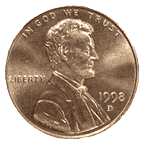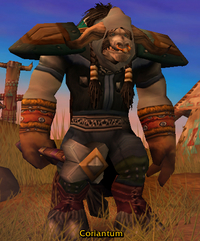Don's decided that we are in violent
agreement with each other: "It's all spam" he writes.
Speaking of spam, I'm sad to see my former employer
give way to whole
hearted mass-emailing. Deseret Book has given their customers email
addresses to LDS Living
and Sparklist for
daily commercial messages. That's not the occasional (read: couple of
times a year) that most people would have been planning on.
I expect they'll be revising their privacy policy soon, at least to modify the paragraph that reads:
Will personal information be shared with outside entities?
No. Deseret Book Company will use the information you provide us for internal purposes only. We will not sell, rent or trade the information to any outside entity. However, if you participate in DeseretBook.com Auctions, your email address will be available to other buyers and sellers to finalize transactions and to conduct other auction related correspondence, and we reserve the right to share your contact information (name, mailing address, etc.) with other auction users who have transactions with you, as we deem necessary and appropriate.
The ironic thing, I'm told, is that for the first couple of days of
daily spamming this week, the third-party spam filtering service Deseret Book
uses was scoring the daily commercial messages as 99.9%-certain spam and
blocking them. Poetic, I think.
— Michael A. Cleverly
Friday, July 01,
2005
at 19:07
259 comments
| Printer friendly version

You may have heard, earlier this year, that you run the risk of
being arrested if you pay for a purchase at Best Buy with
two dollar
bills.
Now, at least in Texas, there is precedent establishing that
you can be held in contempt of court for
paying a legal
judgement in coins instead of bills.
The humble penny, properly known as a "one cent piece" is
the
most common form of currency. According to the United States Treasury Department:
You may be interested to know that the penny is the most widely used denomination currently in circulation and it remains profitable to make. Significantly, it is Congress that determines the denominations of coins that the Mint must produce and put into circulation. Each penny costs .81 of a cent to make, but the United States Mint collects one cent for it. The profit goes to help fund the operation of the United States Mint and to help pay the public debt. In 2000, this profit added up to about $24 million.
Also, while private businesses don't have to accept particular forms of legal
tender as payment, federal law says that all United States money
(coin and currency) are "legal tender for all debts, public
charges, taxes and dues."
Except, apparently, sometimes in Texas...
— Michael A. Cleverly
Friday, July 01,
2005
at 22:52
442 comments
| Printer friendly version

Have you ever felt like we are living in a world made of swiss cheese?
I do. Particularlly today.
First, while it's really just more of the same, here are four articles
(all datelined July 6, 2005, a rather ordinary day) that
illustrate just how porous our private financial details really are:
- Citi National Bank, Thousands of Millionaires, Iron Mountain
- Russia's Black-Market Data Trade
- George's Story—Watching My Ameritrade Account Get Phished Out in 3 Minutes
- USC Admissions, 320,000 SSNs, SQL Injection
Second, after work I spoke with a friend who related an experience she'd
had at her job today. She's been recently assigned to a new project and,
while getting herself up to speed on things, had discovered that a particular
piece of software (that was facing the public internet) had some known
vulnerabilities that she thought required patching/addressing.
When she brought her concerns to the attention of more senior
colleauges she was brushed off. "Well, in practice those are probably
largely obscure attacks." "Most people wouldn't even know
anything about <X>." "It [remediation] doesn't really need to be a priority."
Well, duh... security isn't about keeping the honest people honest;
by definition they
are honest! It's about protecting your information and assets from
"the bad guys" who no longer even need to be on the same continent,
let alone town, as you.
Sing with me: ...It's a small world made of cheese...
— Michael A. Cleverly
Wednesday, July 06,
2005
at 20:11
199 comments
| Printer friendly version
I enjoy algorithmic/computational number puzzles. When I was a kid
(age 9 or 10?) I checked out a book from the public library that,
among other things, had a simple game you could play on paper or with
a calculator:
- Pick a whole number > 0
- If it is odd, multiply it by 3 and add 1
- If it is even, divide it by 2
The book said (IIRC) that all numbers would eventually reach 1. For example,
the unlucky number 13 reaches 1 in 9 steps:
- (13 x 3) + 1 = 40
- 40/2 = 20
- 20/2 = 10
- 10/2 = 5
- (5 x 3) + 1 = 16
- 16/2 = 8
- 8/2 = 4
- 4/2 = 2
- 2/2 = 1
As a child I didn't know that this game had a real name other than
"3x+1". It's actually the Collatz Conjecture, and it is an unsolved
problem in number theory as to whether every number will eventually
reach 1 or not.
A few years ago I produced some computer
generated art based on the 3x+1 problem.
But all this has just been by way of introduction to Eric Angelini's
rec.puzzles posting this morning about
Self-erasing numbers. In his own words:
Take an integer like 36, for example.
Concatenate an infinite amount of copies. You get:
363636363636363636363636363636...
- read the leftmost digit -"3"-,
- jump *over* 3 digits (to the right), land on (3) and erase
it:
3636(3)6363636363636363636363636...
^
- read the leftmost unread digit, jump only visible digits,
erase:
3636(3)6363(6)36363636363636363636...
^^
- repeat until you see a substring like this [...(a)36(b)...]
[(a) and (b) are erased digits - "36" is the integer you
are, testing]: bingo, you have found a "Self-erasure survi-
ving number" (SESN):
"36" is such a number:
3636(3)63(6)3(6)36(3)(6)3(6)36363636363636...
^^^^ ^^ .. <-- hit
This erasing technique gives sometimes quite complicated pat-
terns. "16", for instance, is not a SESN -- but it takes a
while to see:
16(1)616(1)61(6)1(6)(1)6(1)(6)1(6)1(6)1(6)1(6)(1)6(1)616(1)61(6)1(6)
^^ ^^^ ^^ ^ ^ ^ ^ ^ ^ ^ ^^^ ^^ ^
|_______________________________________________|
recurrent pattern
The first SESN I have found by hand are:
0 1 2 3 4 5 6 7 8 9 10 20 23 24 25 26 27 28 29 30 32 36 37
38 39 40 42 ...
[BTW, reading "0" means erasing the closest visible digit
immediately to the right]
No SESN > 10 begins with "1" -- see why?
No SESN > 299 begins with "2", etc.
The sequence is finite, thus.
Last term?
I wrote a program to compute whether a
number is a Self-Erasure Surviving Number tonight—a
fun diversion.
Though, either I have a bug, or I don't see why a number beginning
with 1, which is greater than 10, can't be an SESN... it would appear that
114 is a valid SESN. Consider the output from my program (which adopts
the notation used by Eric) for ./SESN.tcl 114:
114114114114114114114114114114114114114114114114114114114114
11(4)114114114114114114114114114114114114114114114114114114114
^
11(4)1(1)4114114114114114114114114114114114114114114114114114114
^^
11(4)1(1)4(1)14114114114114114114114114114114114114114114114114114
^^ ^
11(4)1(1)4(1)1411(4)114114114114114114114114114114114114114114114114
^^ ^ ^
11(4)1(1)4(1)14(1)1(4)114114114114114114114114114114114114114114114114
^^ ^ ^ ^
11(4)1(1)4(1)14(1)1(4)114(1)14114114114114114114114114114114114114114114
^^ ^ ^ ^^ !!!
114 is a Self-Erasure Surviving Number (SESN)!
Time for bed; there will be time to ponder 114 more deeply during
the commute.
Oh, and if you want to play the 3x+1 game sometime—perhaps
during a boring meeting, or when you are stuck in traffic and
have a lot of time to kill—start with 27...
— Michael A. Cleverly
Thursday, July 07,
2005
at 23:53
191 comments
| Printer friendly version
Talking with Becca tonight in Bountiful, I discovered what I want to
give my siblings and parents for Christmas this year: a printed book with
all of our blog posts from 2005
(well, the seven out of eight of us who blog—eight if Camilla ever
decides to take a stab at citizen-publishing).
That's the high-level idea. I don't know yet exactly how I'll lay it out.
For instance, should all posts be arranged chronologically, or sections
per author (or per author per blog in the case of Becca and Anna)?
I'll typeset it using the Memoir
LaTeX class. I can have copies printed down in Utah County at
Alexander's.
On Christmas day I'll have to give rain-checks, since there'd still be
another weeks worth of posts to include in the final product.
— Michael A. Cleverly
Sunday, July 10,
2005
at 23:26
361 comments
| Printer friendly version
A correction I noticed and submitted yesterday to the
Regret The Error blog
(about Utah Power's list of
customers on life support being for "billing purposes only")
was
posted today.
— Michael A. Cleverly
Tuesday, July 12,
2005
at 19:53
194 comments
| Printer friendly version
Here is a profound observation I read somewhere earlier this week:
Money is a renawble resource—time isn't.
Now I just wish I could find the source (a blog? comments on a blog? a web
page? Google has some results, but none of them appear to
be what I read originally.)
— Michael A. Cleverly
Thursday, July 14,
2005
at 22:49
423 comments
| Printer friendly version
Design tip #1 for the Utah Department of
Transportation: don't list a frequently asked question on/in a FAQ when
you can't provide the answer (or at least some pithy response).
From the FAQ for CommuterLink Email Alerts:
Q: What is my Main Email Address?
A:
Design tip #2: don't require a browser with Javascript enabled and some
particular set resolution. Consider offering RSS, Atom, or other XML-feeds or
even just a text-only option like the National
Weather Service.
— Michael A. Cleverly
Monday, July 18,
2005
at 22:50
197 comments
| Printer friendly version

"Eliza, why is there no I-50/60, why?" someone once asked (though I suspect he knew the
answer already).
In 7th grade I wrote a report about the design, history, and numbering
of the Interstate system. In the spirit of recycling knowledge, here are the highlights as I recall
them:
- Major routes end in either a 5 or a 0
- North/South routes are odd numbers
- East/West routes are even numbers
- Odd numbers begin on the west coast (I-5) and increase as you travel eastward (I-95 along the east coast)
- Even numbers begin in the south (I-10) and increase as you travel north (I-90 which parallels the Canadian border)
- A three digit route is a belt-route (1xx, 2xx, 3xx, 4xx, etc.)
- If the first digit of a three digit route is even, the belt-route typically
forms a loop
- If the first digit of a three digit route is odd, the belt-route is a
typically a spur
- I-50 and I-60 do not exist because they would run through areas served
by US 50 & US 60
The Federal
Highway Administration's Route Log and Finder List has more information.
An open question (as far as I know), in the spirit of The Traveling Salesman Problem, is: what route
you would need to take on a road trip to drive at least one mile on each numbered Interstate
(either with or without including beltroutes) in the 48 contiguous states to
minimize distance traveled and/or time.
In Utah the quickest way I can think of to go at least a mile on each
Interstate would be to begin at Cove
Fort near the I-70/I-15 junction. Travel on I-70 and go north on I-15 at
the junction. Continue until you get to the southern I-215 interchange in
Salt Lake County and take it to I-80. Go up into the canyons until you reach
the I-84 junction near Echo.
(Interstate 50 is also the name of an interesting artistic photo
collection.)
— Michael A. Cleverly
Tuesday, July 19,
2005
at 00:29
7229 comments
| Printer friendly version

Over the weekend I got World of
Warcraft character to a new milestone: level 40. This is sort of a
coming of age point. At level 40 you can finally buy a horse, and as a
Tauren you
can finally wear mail armour instead of just cloth or leather armour.
Of course, I've yet to purchase either (a horse or mail armour) because
I haven't earned/saved enough gold yet. Several times I've let Caleb &
Meghan play for a bit only to return later to discover that my net-worth has
somehow declined by 50%. Purchasing gold from an overseas sweatshop could solve my financial problems,
but that'd seem to take most of the fun out of the game.
Meghan and Caleb both would like to have their own characters to play
with: hunt, fish, explore, etc. Before I let them have more unfettered
access I definitely want to get up to speed more on
user-interface customization so I could,
for example, limit chat and mail to the handful of real-life players (my
friends) that they know and who know them.
Being on a PvP (player versus player) server has been a lot of fun. There
is an extra rush of andrenaline when you're facing another human opponent
instead of just a computer-controlled monster.
Several friends (from real life) all started playing new Horde characters
on a PvP server at the same time I did. Initially we only engaged the enemy
faction ("The Alliance") in combat when we were comparably matched. If a
group of us ran into a lone member of the alliance, we wouldn't pursue him.
Nor would we engage players who were lower levels (and who shouldn't have
strayed into contested territory to begin with).
Over time, however, as a result of higher-level Alliance members
(i.e., more than ten levels above) repeatedly killing us I've noticed that
the sense of chivalry being replaced by an instinctive reaction to kill
the enemy on sight, regardless. (In World of Warcraft, unlike in
Ancient Anguish there is no major penalty
when you die—you don't lose a whole leve, for example.)
Which, of course, is a perfectly valid style of game play and sort of what
you ought to expect when you play on a PvP server. But it's been interesting
to watch our groups attitude become battle-hardened as time has gone by.
Though a game, with a cartoon-ish interface at that, this aspect models
real life quite well...
— Michael A. Cleverly
Tuesday, July 26,
2005
at 19:39
3059 comments
| Printer friendly version
Time flies. Just three months from tomorrow the 2005
National Novel Writing Month begins.
This will be the third year I've thought about entering.
In 2003 I thought, "hey, that sounds interesting" when Becca told me
about NaNoWriMo.
In 2004 Becca was going to do it if I did. Except I was incredibly
busy at work, and Becca decided she should use her time to work on her
British correspondence
course in Interior Design.
It's 2005. I now have a different job (which has the advantage of both
paying more and providing a much betteer work/life balance). Will this be
the year I actually put pen to paper (or, more likely, fire up
vi novel.tex)?
(Becca tells me she
probably won't be participating... because she still has her correspondence
class to work on, and she hasn't turned in a single assignment since before
November 2004... I think she needs a new excuse this year ;-)
— Michael A. Cleverly
Sunday, July 31,
2005
at 19:26
196 comments
| Printer friendly version
Perhaps I might have more success with National Novel Writing Month in November if I warmed up by participating in
the 11th Annual Interactive Fiction
Competition first.
Their deadline to enter is September 1st, with final entries due by
September 30th.
I've long been interested in interactive fiction, having played many Infocom games on
the Commodore 64 and Apple II back in the day.
But I've never tried to write
interactive fiction. I've done some reading on a few IF
programming
languages, but never done anything much past ye olde "hello world"
stories.
On my Amazon.com wishlist:
- Inform Beginner's Guide
- The Inform Designer's Manual
- Twisty Little Passages: An Approach to Interactive Fiction
Instead of using a "mainstream" IF programming language, I wonder if I might
not find more immediate success using Snit? (Which did hit version 1.0 last
month.)
— Michael A. Cleverly
Sunday, July 31,
2005
at 20:53
205 comments
| Printer friendly version



